What is the Best AI Chatbot for E-commerce?

The best AI chatbot depends on your platform, goals, and store size. In 2025, top picks include:
- Tidio – Great for small businesses
- Gorgias – Best for Shopify automation
- Zendesk – For enterprise-level control
- Manychat – Focused on Instagram and Messenger
- Shopify Inbox – Best free option for beginners
In this guide, we’ll break down the top AI chatbots for e-commerce, compare their features, pricing, and use case. Whether you're just starting out or looking to upgrade, this will help you decide which one to use.
Key Takeaways:
- Pick the Right Tool for Your Store. The best chatbot depends on your platform, store size, and goals.
- Each Chatbot Has Its Strength. Some are better for Shopify, others for social sales or enterprise support.
- Chatbots Save Time and Boost Sales. They handle support, recommend products, and work 24/7.
What Makes a “Best” E-commerce Chatbot?
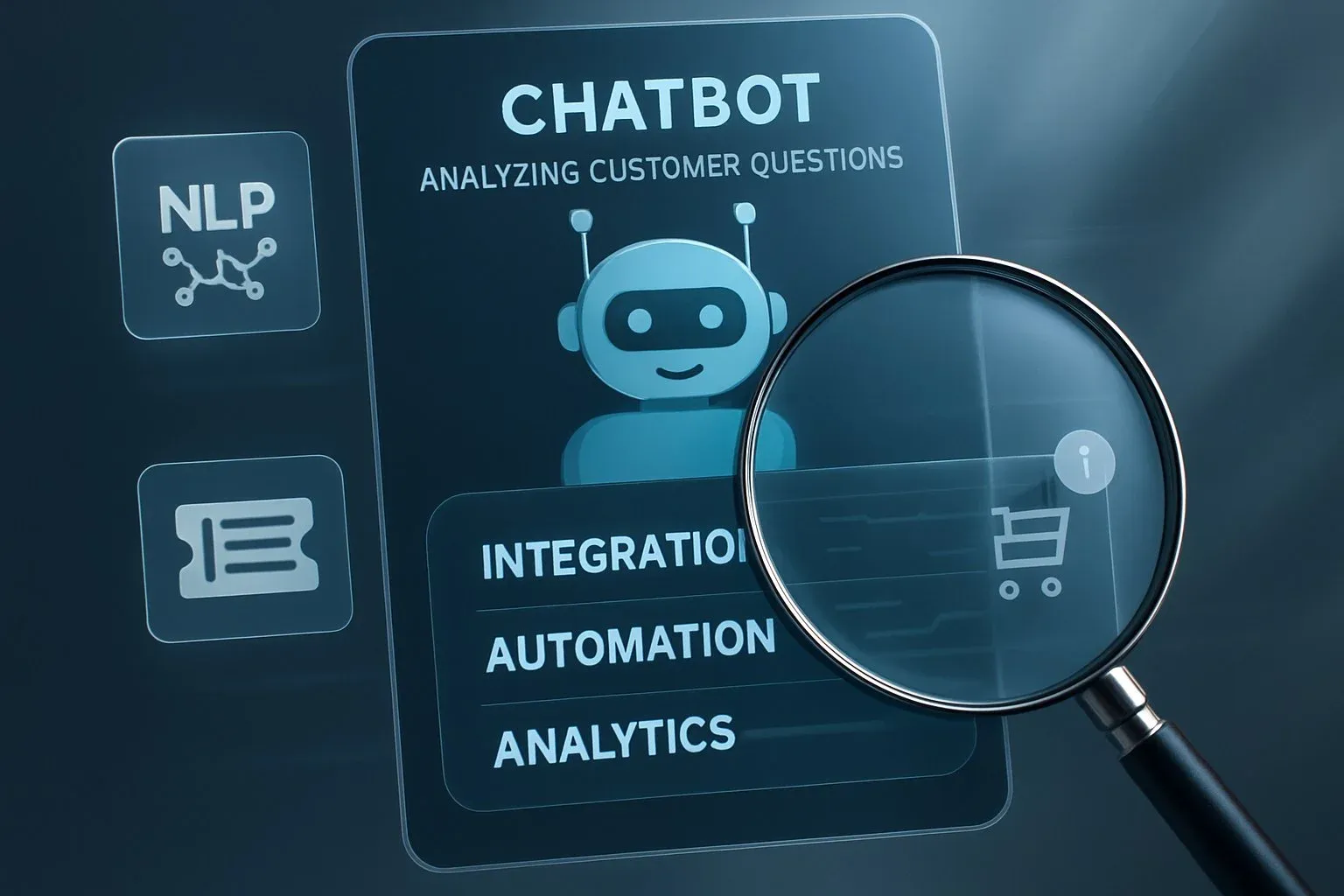
When evaluating AI chatbots, prioritize tools that deliver:
- Natural‑language understanding (NLP) – Handles real customer questions smoothly
- Platform integration – Works with Shopify, WooCommerce, Amazon, etc.
- Automated support – Manages basics like returns, tracking, FAQs
- Product recommendations & upselling – Boosts average order value
- Abandoned‑cart recovery – Reminds customers and drives conversions
- Multichannel messaging – Supports chat, email, social apps (Instagram, WhatsApp)
- Customizable & easy setup – No coding, on‑brand experience
- Analytics & performance tracking – Measures ROI and interaction quality
- 24/7 multilingual support – Always available, in your customers’ languages
Top AI Chatbots for E-commerce
Here are some of the top AI chatbot tools in 2025 and how they match the features above.
1. Tidio
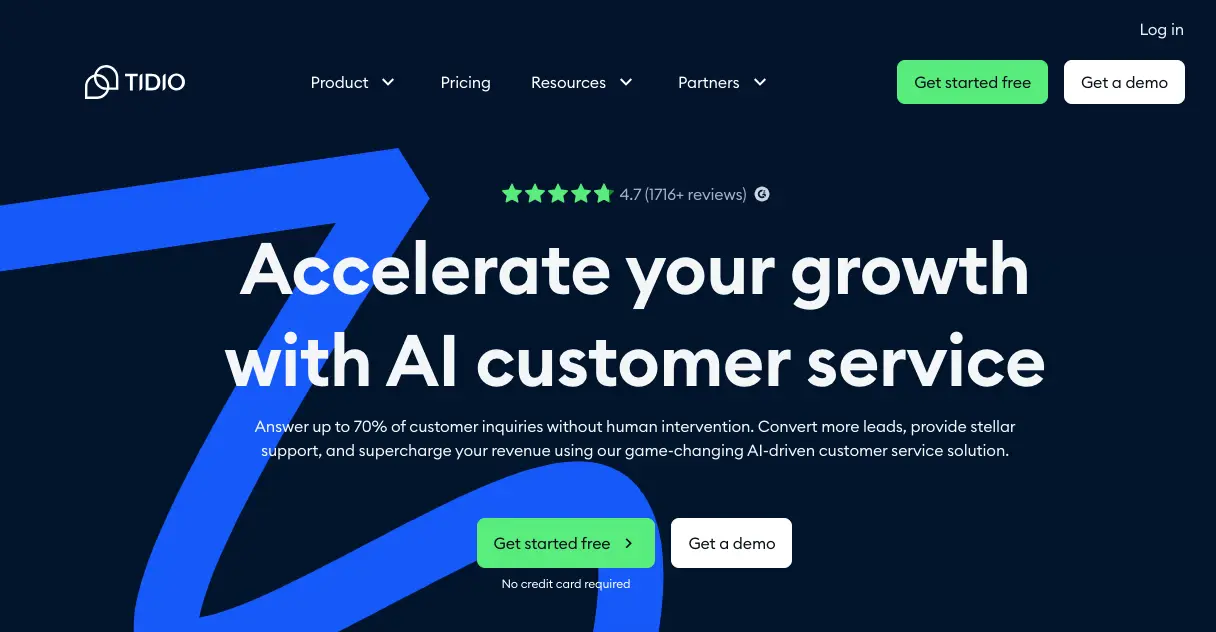
Tidio is a live chat and AI chatbot platform built for ecommerce. It’s ideal for small to mid-sized online sellers who want a quick way to automate support, connect with customers across channels, and manage everything from one dashboard
Key Features:
✅ NLP: Lyro AI handles natural conversations with customers.
✅ Platform Integrations: Shopify, Wix, BigCommerce, and via Zapier for others.
✅ Automated Support: Auto-responds to FAQs, order tracking, and refund queries using pre-built flows.
✅ Product Recommendations: Uses AI triggers to suggest products based on cart behavior
✅ Cart Recovery: Sends smart reminders via chat pop-ups and emails.
✅ Multichannel Messaging: Combines live chat, email, Messenger, and Instagram DMs in one inbox
✅ Easy Setup: No-code drag-and-drop chatbot builder.
✅ Analytics: Real-time dashboard for message volume, resolution time, and conversion rate.
✅ 24/7 + Multilingual: Supports 20+ languages; Lyro works around the clock.
2. Gorgias
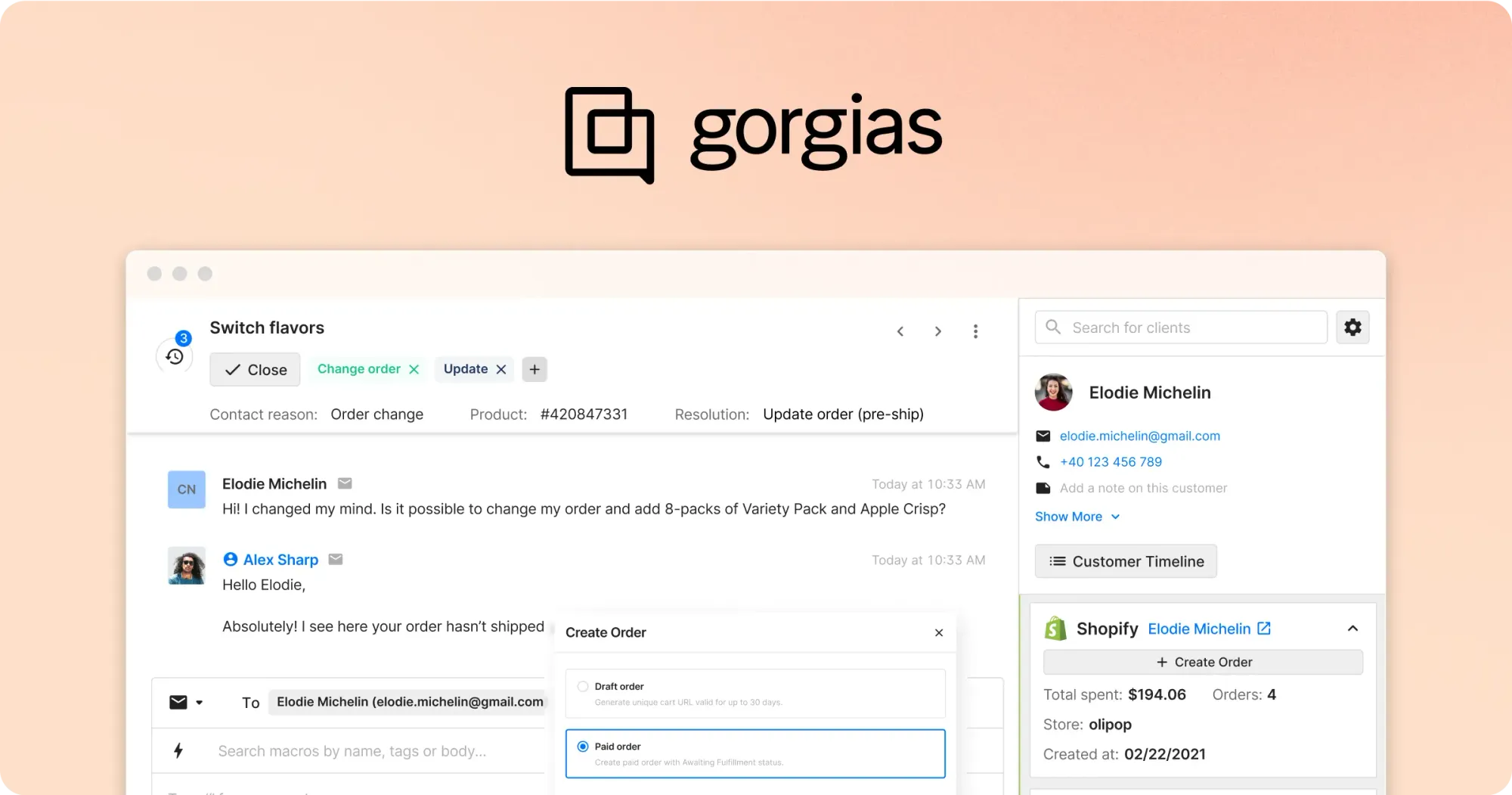
Gorgias is a customer service platform with AI features tailored for ecommerce. It’s best for Shopify or BigCommerce users who deal with a high volume of support tickets and want tools that directly tie customer service to revenue.
Key Features:
✅ NLP: AI Autoresponder suggests responses based on ticket content.
✅ Platform Integrations: Deep Shopify integration; also supports BigCommerce and Magento.
✅ Automated Support: Auto-replies for returns, shipping updates, and order status.
✅ Product Recommendations: Pulls product info dynamically from Shopify for upsell scripts.
✅ Cart Recovery: Triggers proactive messages based on customer activity (via integrations).
✅ Multichannel Messaging: Unified inbox for email, live chat, Instagram, Messenger, and SMS.
✅ Easy Setup: Easy onboarding with Shopify; macros and rules for customization.
✅ Analytics: Tracks revenue from support, agent performance, and resolution times.
✅ 24/7 + Multilingual: Supports translations and international stores through Shopify locales.
3. Zendesk

Zendesk is a full-scale customer support suite with strong AI automation and deep integrations. It’s suited for medium to large businesses that need advanced workflows, multichannel support, and enterprise-level control.
Key Features:
✅ NLP: Zendesk AI Agent can understand and respond with context.
✅ Platform Integrations: Shopify, WooCommerce, Salesforce, and more via apps.
✅ Automated Support: Offers AI-powered ticket routing and FAQ responses.
✅ Product Recommendations: Can link knowledge base articles and products in responses.
❌ Cart Recovery: Limited natively; often handled via connected CRM or third-party apps.
✅ Multichannel Messaging: Unified support across email, live chat, SMS, WhatsApp, Facebook Messenger.
❌ Easy Setup: Requires more setup but offers powerful workflows and triggers.
✅ Analytics: Detailed reporting on CSAT, volume, resolution time, and agent efficiency.
✅ 24/7 + Multilingual: Offers language support via AI or live translation add-ons.
4. Shopify Inbox
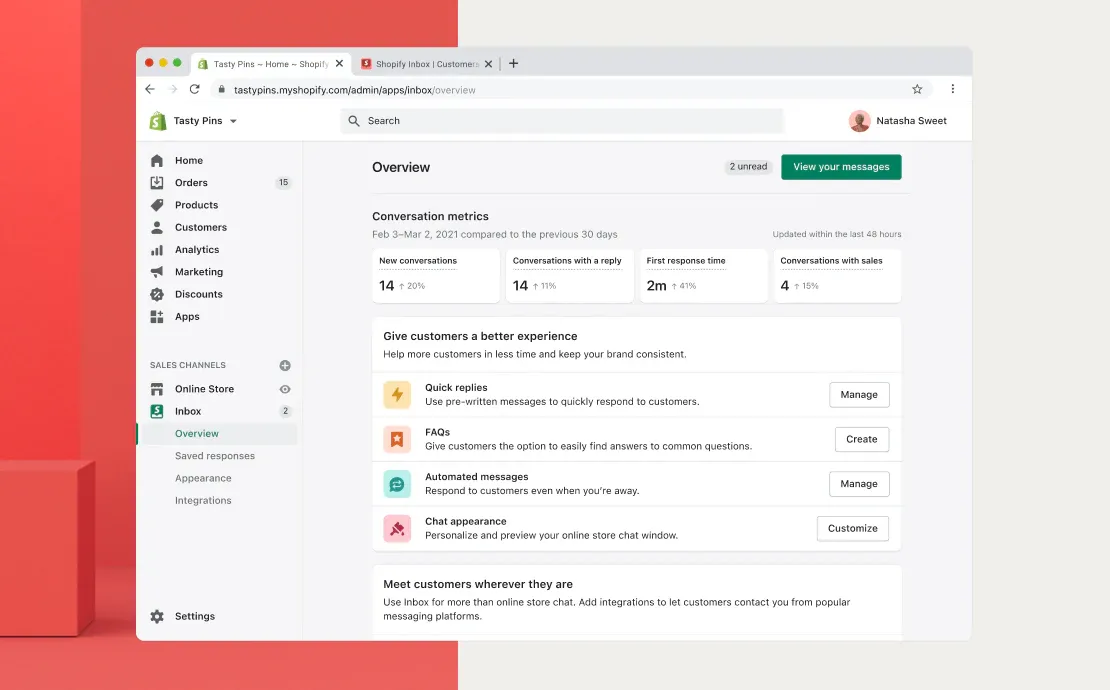
Shopify Inbox is a free messaging tool built directly into Shopify. It’s perfect for beginners or small store owners who just need a simple way to chat with customers without installing extra software or paying for extra features.
Key Features:
❌ NLP: No built-in NLP; basic rules-based responses.
✅ Platform Integration: Built directly into Shopify — no setup needed.
✅ Automated Support: Quick reply templates and FAQ automations.
❌ Product Recommendations: Cannot dynamically recommend products.
❌ Cart Recovery: No direct feature; requires other Shopify apps.
✅ Multichannel Messaging: Connects with Apple Messages for Business, Instagram, and Shop Chat.
✅ Easy Setup: Auto-installs for all Shopify stores.
✅ Analytics: Basic view of chat performance via Shopify admin.
❌ 24/7 & Multilingual: 24/7 available, but limited language options without plugins.
5. ManyChat
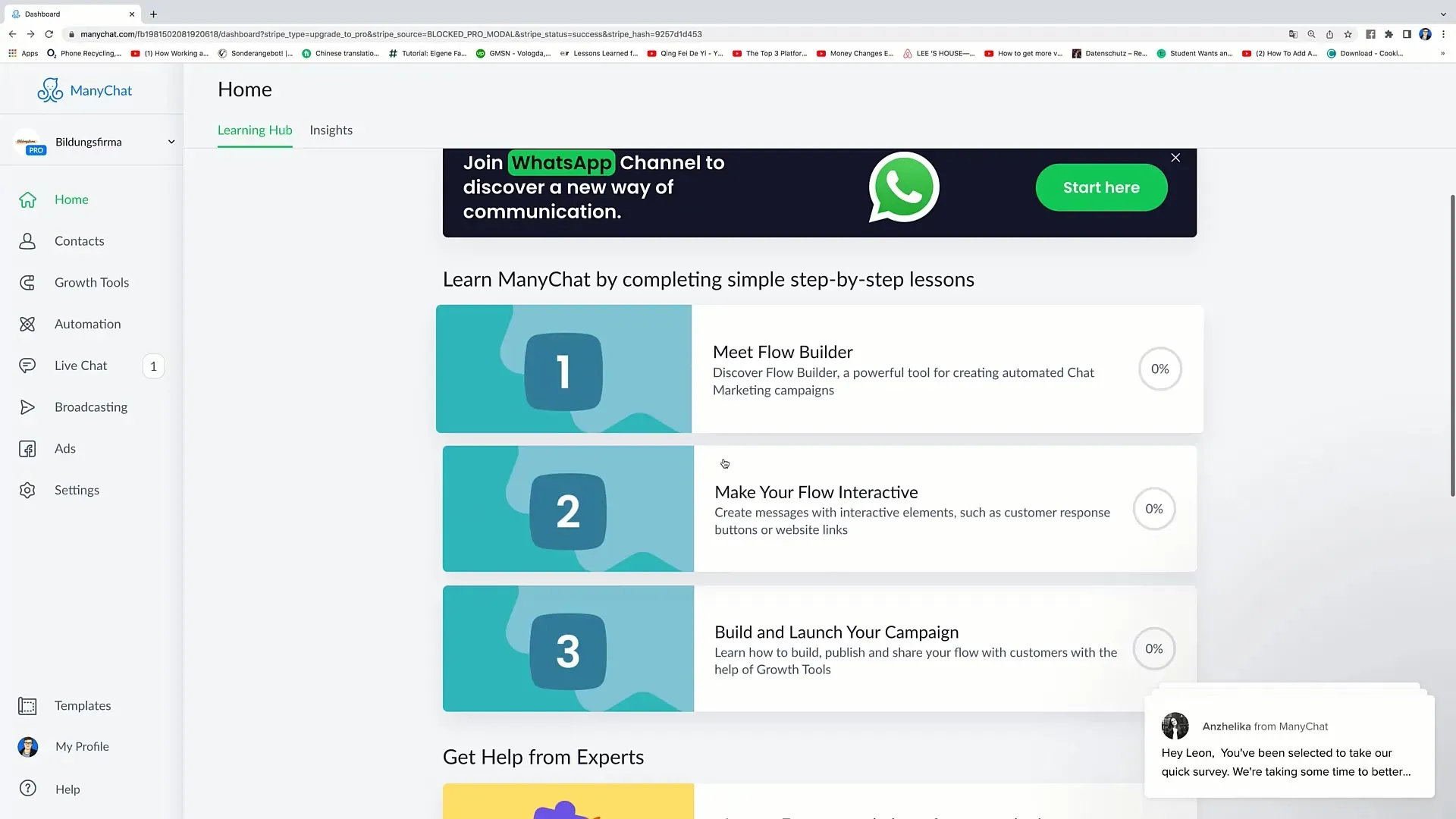
ManyChat is a chatbot builder focused on social messaging platforms like Messenger, Instagram, and WhatsApp. It’s a great fit for sellers who prioritize marketing and customer engagement on social channels and want to automate conversations at scale.
Key Features:
✅ NLP: Uses ChatGPT-powered AI (Pro plan) for natural conversations.
✅ Platform Integrations: Connects with Shopify, Stripe, Google Sheets, and CRMs via Zapier.
✅ Automated Support: Responds to questions on Messenger, Instagram, and WhatsApp using smart flows.
✅ Product Recommendations: Sends product cards in chat with links to purchase.
✅ Cart Recovery: Recovers carts via Messenger DMs and WhatsApp nudges.
✅ Multichannel Messaging: Works across Messenger, Instagram, WhatsApp, and SMS.
✅ Easy setup: Visual flow builder; easy to deploy templates.
✅ Analytics: Campaign analytics, open rates, and conversion tracking built in.
✅ 24/7 & Multilingual: ChatGPT-powered responses available in multiple languages.
Comparison Table: Best Use Cases and Pricing
Here are other information you need to know for each AI chatbot:
| Tool | Best For | Starting Price |
|---|---|---|
| Tidio | SMBs needing a customizable AI chatbot | Free, Paid from $29/mo |
| Gorgias | High-volume support on Shopify | $10/mo (usage-based) |
| Zendesk | Enterprise-level customer support | $55/agent/mo |
| Shopify Inbox | Basic chat for Shopify beginners | Free |
| Manychat | Social commerce + Messenger automation | Free, Paid from $15/mo |
Final Thoughts: Which AI Chatbot Is Right for You?
Choose a chatbot that fits your store size, platform, and goals.
If you sell on Shopify and need advanced automation, go for Gorgias. For multichannel messaging and social selling, Manychat is a top pick. If you’re just starting out, Shopify Inbox or Tidio offers an easy way in.
Your best chatbot depends on:
- Your platform (Shopify, WooCommerce, Amazon, etc.)
- Your budget
- How much support you want to automate
- Where your customers prefer to chat (website vs. Messenger vs. WhatsApp)
👉 Want to know more about AI chatbot? Check out our guide about AI chatbot in Ecommerce.
Frequently Asked Questions
![]()
1. What is the most popular AI chatbot for Shopify?
Gorgias and Tidio are two of the most used AI chatbots for Shopify in 2025.
They integrate well, offer strong automation, and are beginner-friendly.
2. Can AI chatbots increase sales?
Yes. Chatbots can upsell, recover carts, and recommend products to boost revenue.
3. Are there free AI chatbots for e-commerce?
Yes. Tidio and Shopify Inbox both offer free plans.
4. Which chatbot works with Instagram and WhatsApp?
Manychat is best for Instagram, Messenger, and WhatsApp automation.
5. Do I need coding to set up a chatbot?
No. Most modern AI chatbots offer drag-and-drop builders and templates.
6. How do chatbots handle returns and shipping questions?
They pull info from your store or help desk to auto-answer questions 24/7.
7. Are AI chatbots better than live chat agents?
They’re faster for FAQs and basic tasks—but live agents are still useful for complex cases.
8. Can I use one chatbot across all platforms?
Yes. Tools like Tidio, Gorgias, and Manychat support multichannel messaging.
9. Do chatbots support multiple languages?
Most premium tools offer multilingual support and auto-detection.
10. What’s the easiest chatbot for beginners?
Shopify Inbox or Tidio are great if you’re just getting started.
Want to Add the Right Chatbot to Your Store?
Join our mini-course at WAH Academy and get step-by-step help on choosing, setting up, and using an AI chatbot—whether you sell on Shopify, Amazon, or anywhere else.
No tech headaches. No fluff. Just smart tools that do the work for you.
Tap the button and start putting your store on autopilot today.
